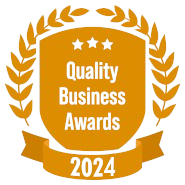A poor CEO is someone who fails to effectively lead and manage a company, resulting in negative consequences for the organization and its stakeholders.
Some characteristics and behaviors that can contribute to a CEO being considered poor include…
- Lack of Vision – A poor CEO may not have a clear vision for the company’s future or may fail to effectively communicate and execute that vision.
- Poor Decision-Making – Making decisions that are not in the best interest of the company, its employees, or its stakeholders can lead to poor outcomes and damage the company’s reputation and success.
- Micromanagement – Constantly interfering in the work of employees, failing to delegate effectively, and not trusting others to do their jobs can create a toxic work environment and hinder productivity.
- Lack of Accountability – Failing to take responsibility for mistakes or shortcomings and blaming others for problems within the company can erode trust and morale.
- Poor Communication – Not communicating effectively with employees, stakeholders, or the public can lead to misunderstandings, confusion, and a lack of alignment within the organization.
- Short-Term Focus – Prioritizing short-term gains over long-term sustainability and growth can lead to decisions that harm the company’s future prospects.
- Lack of Adaptability – Failing to adapt to changes in the market, industry, or business environment can leave the company vulnerable to competitors and trends.
- Ethical Lapses – Engaging in unethical behavior, such as fraud, corruption, or dishonesty, can have serious consequences for the company and its reputation.
- Poor People Management – Failing to prioritize the well-being and development of employees, or creating a toxic work environment, can lead to high turnover and low morale.
- Resistance to Feedback – Being closed off to feedback from employees, stakeholders, or advisors can limit growth and prevent the CEO from addressing weaknesses or blind spots.
Overall, a poor CEO is someone who fails to effectively lead, manage, and grow a company, resulting in negative outcomes for the organization and its stakeholders.







